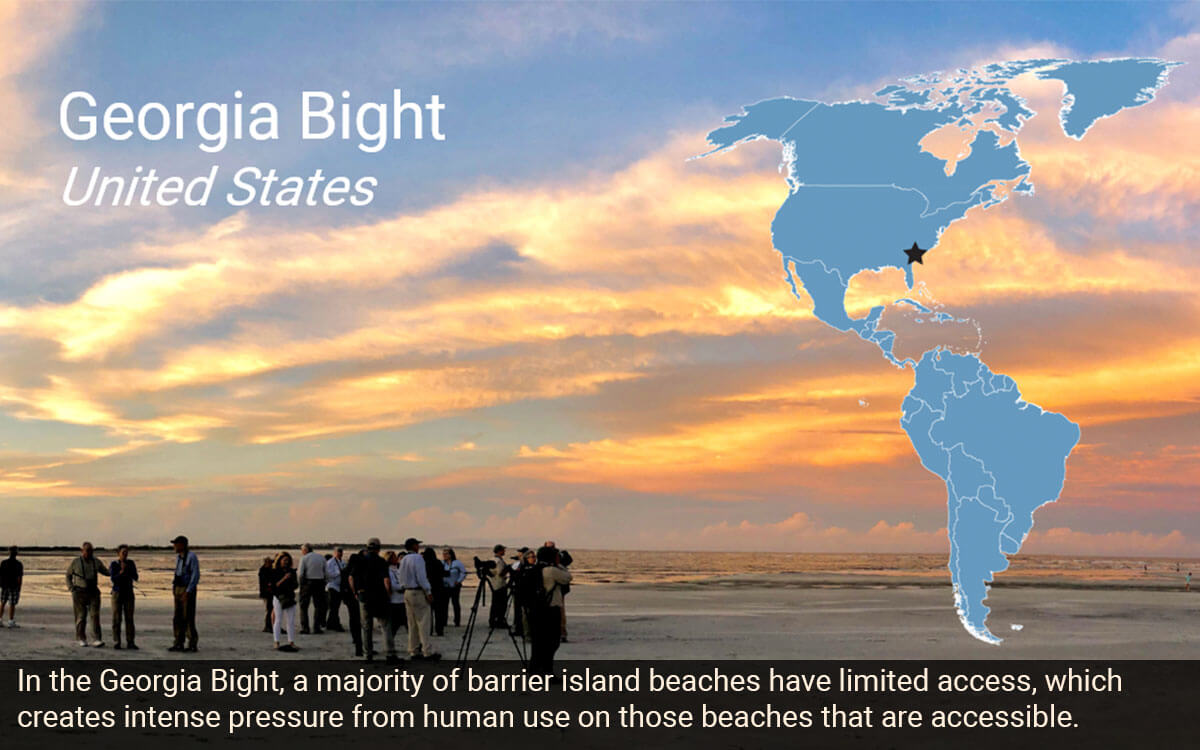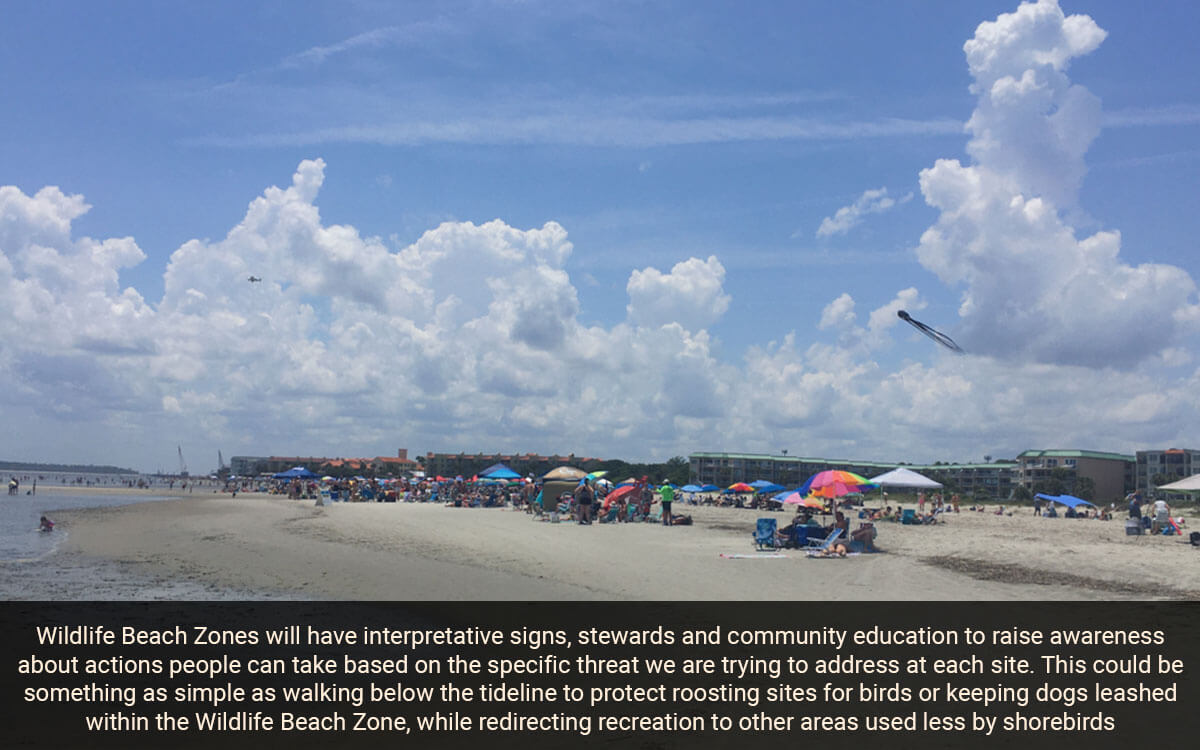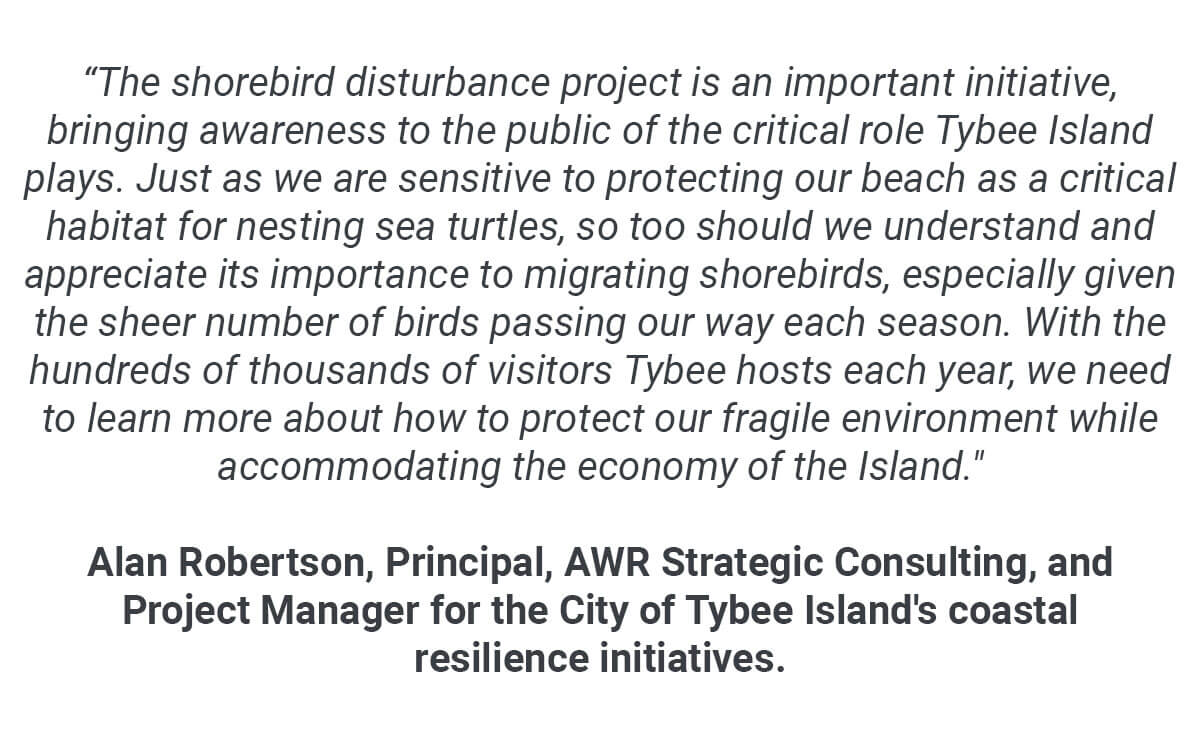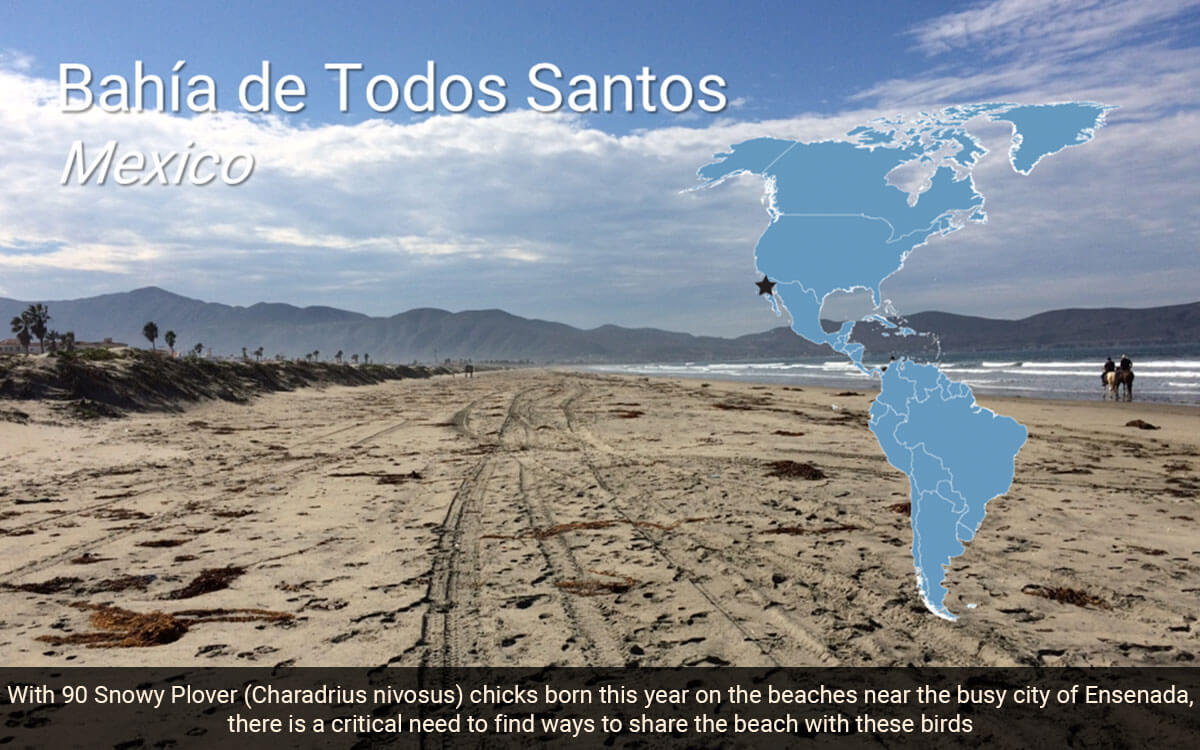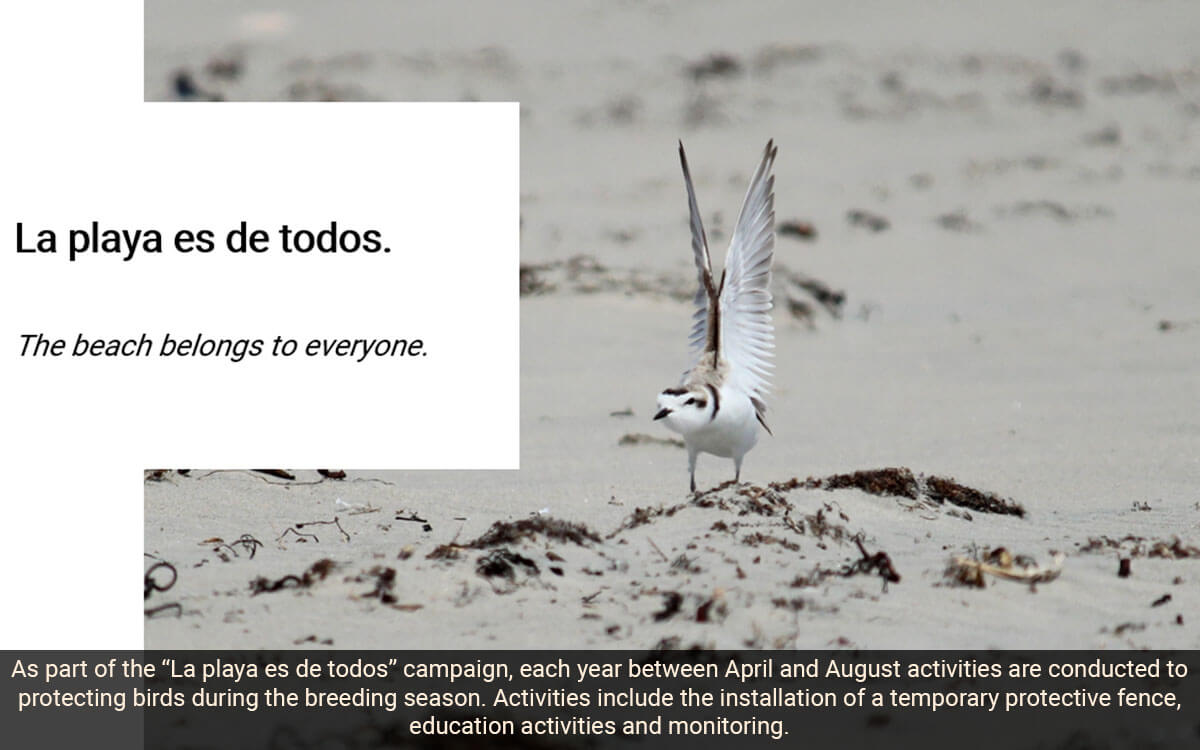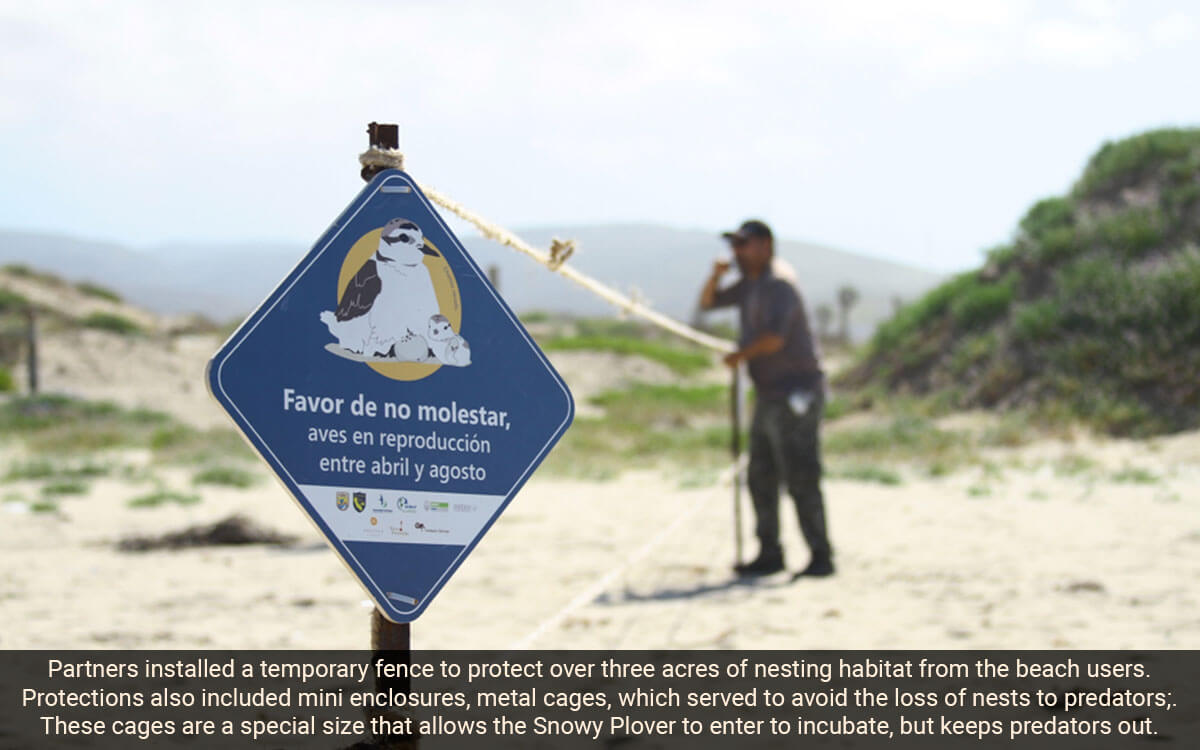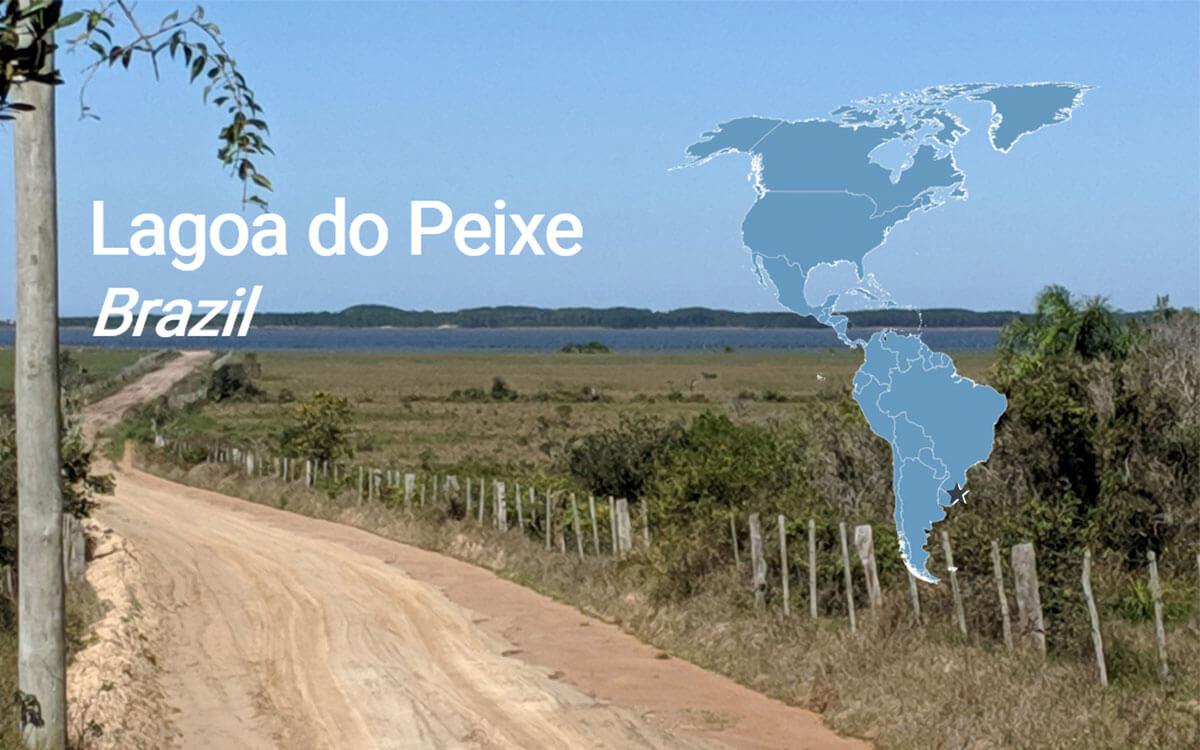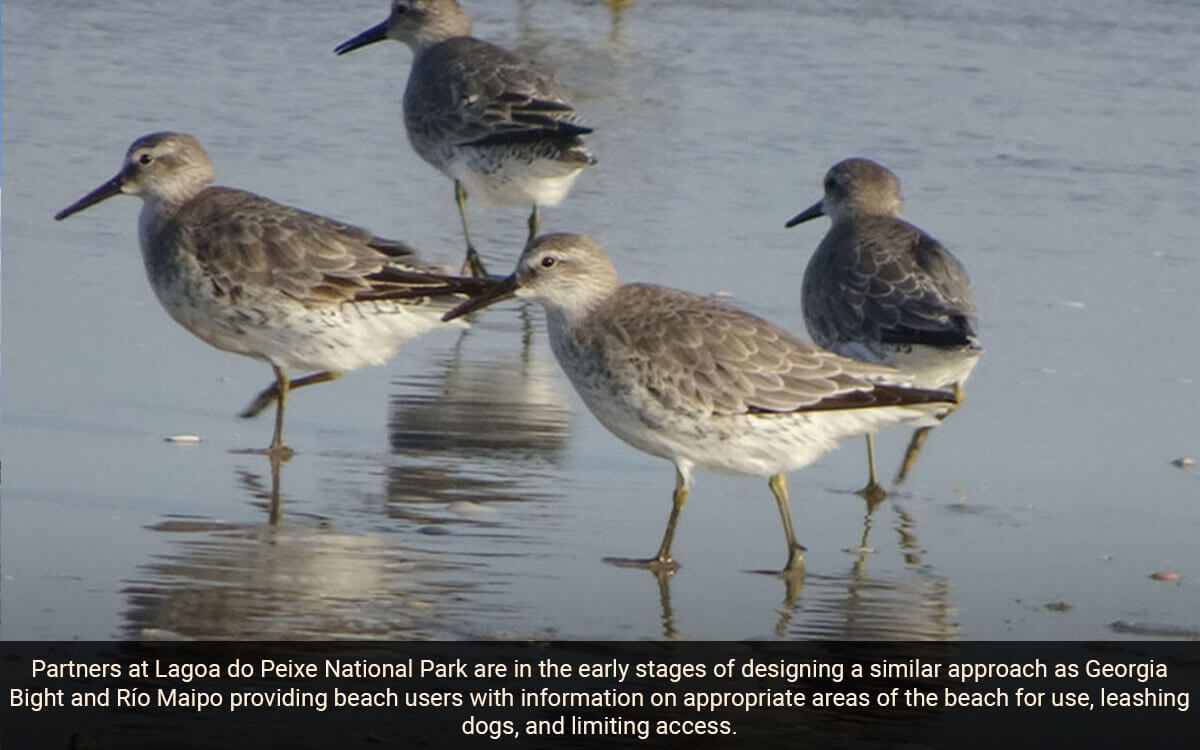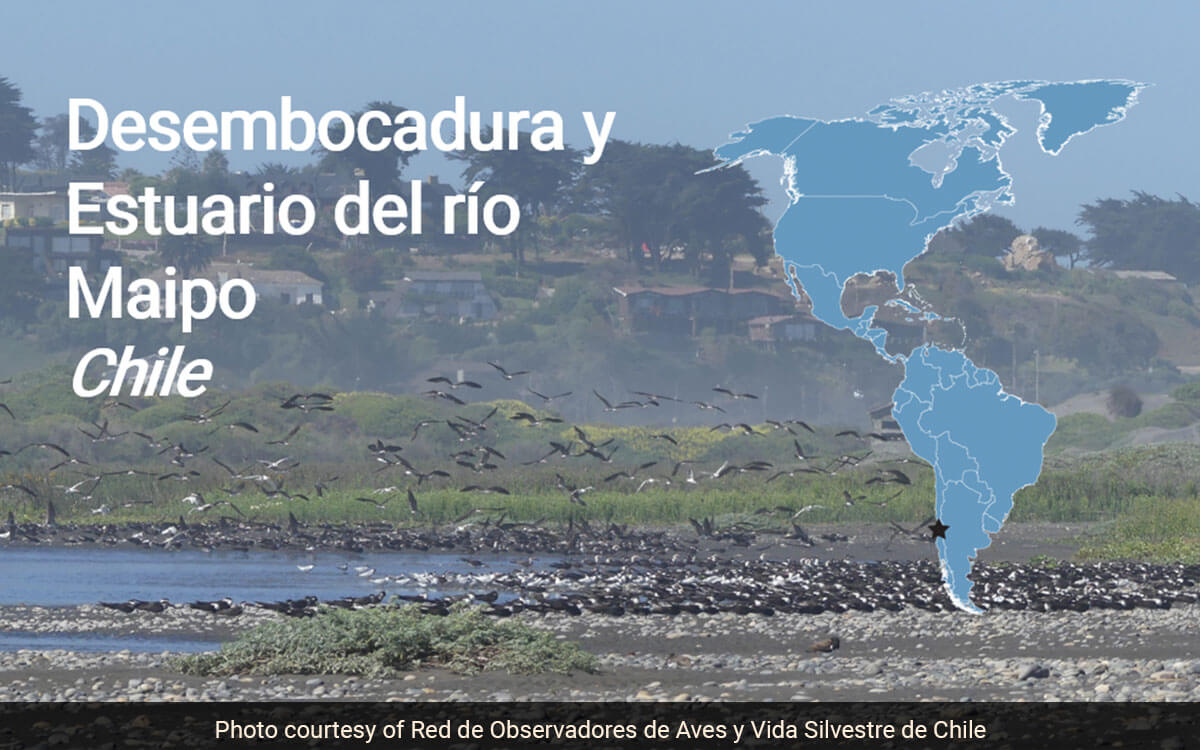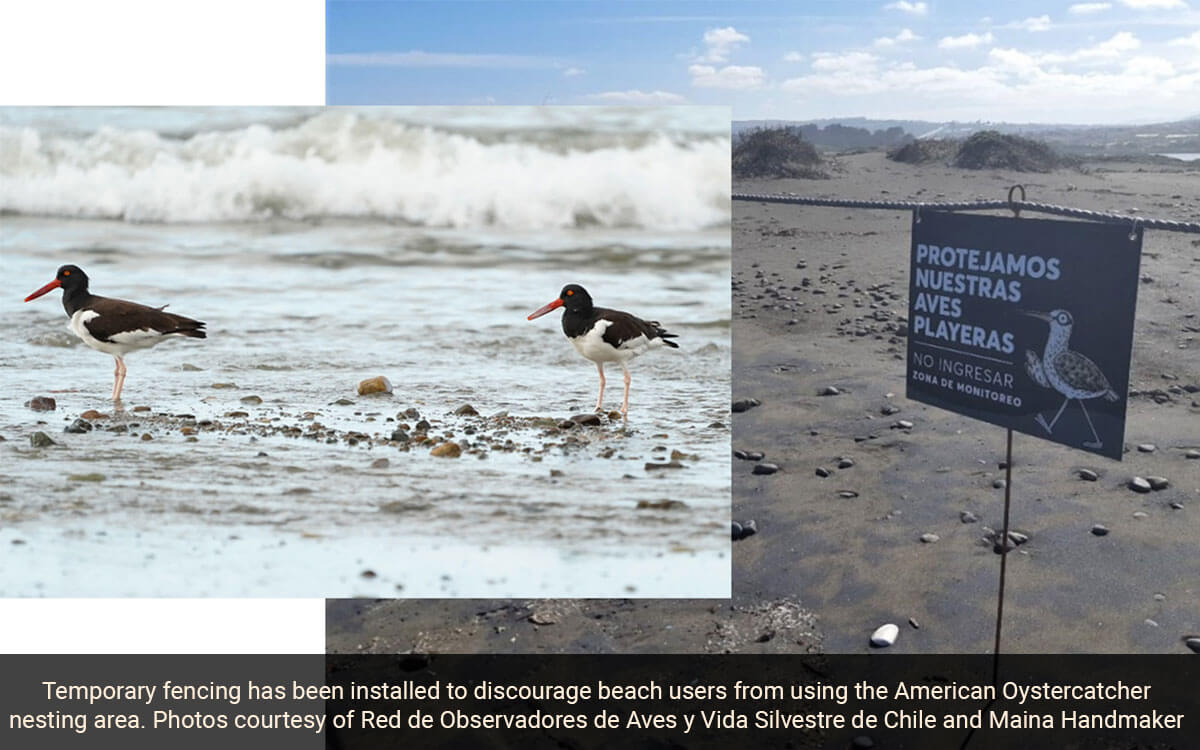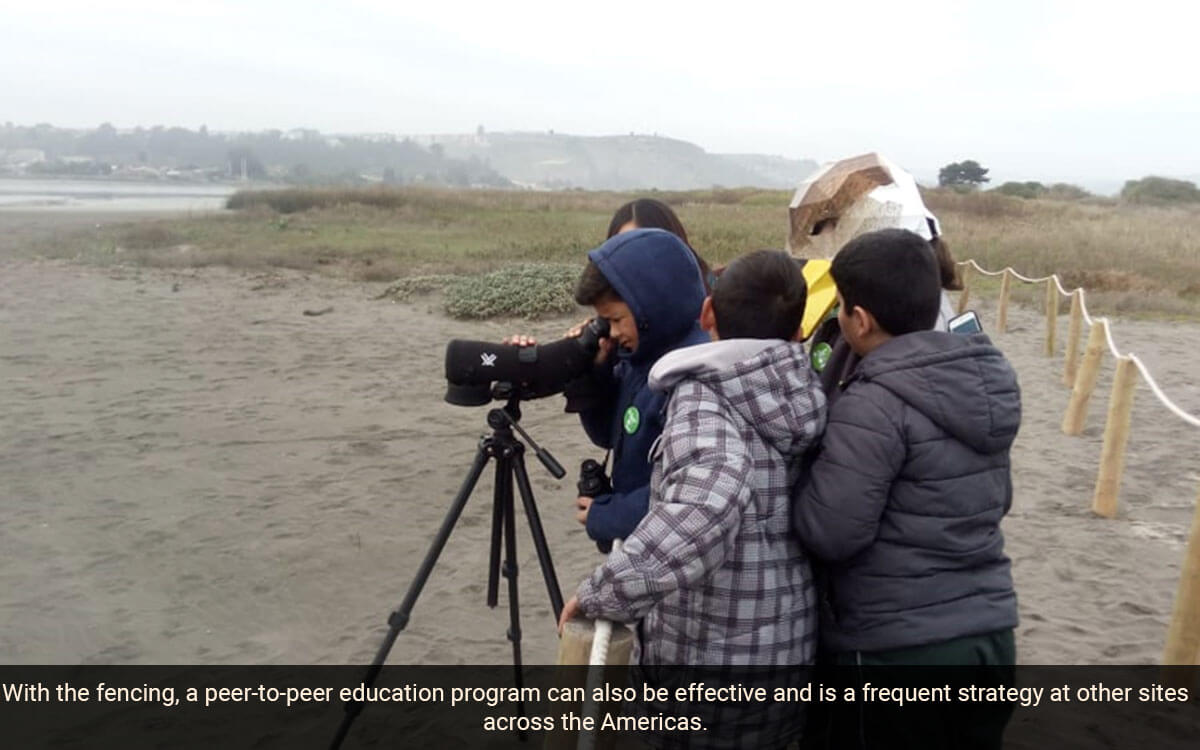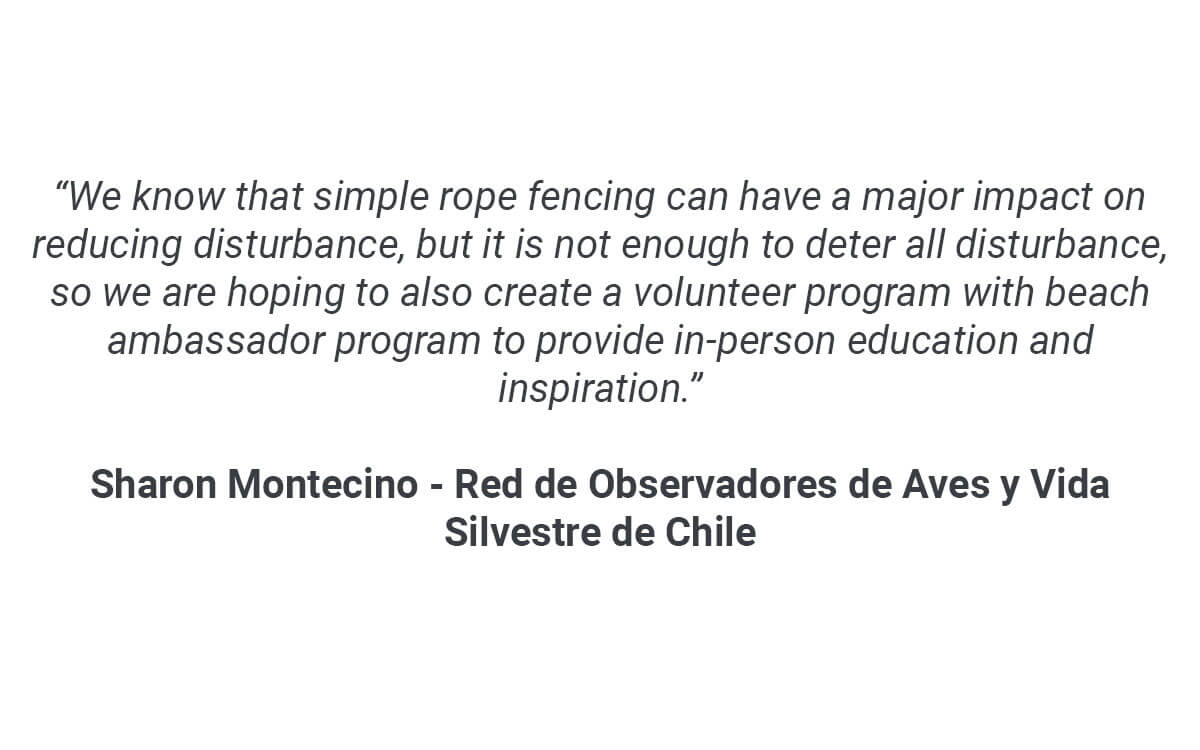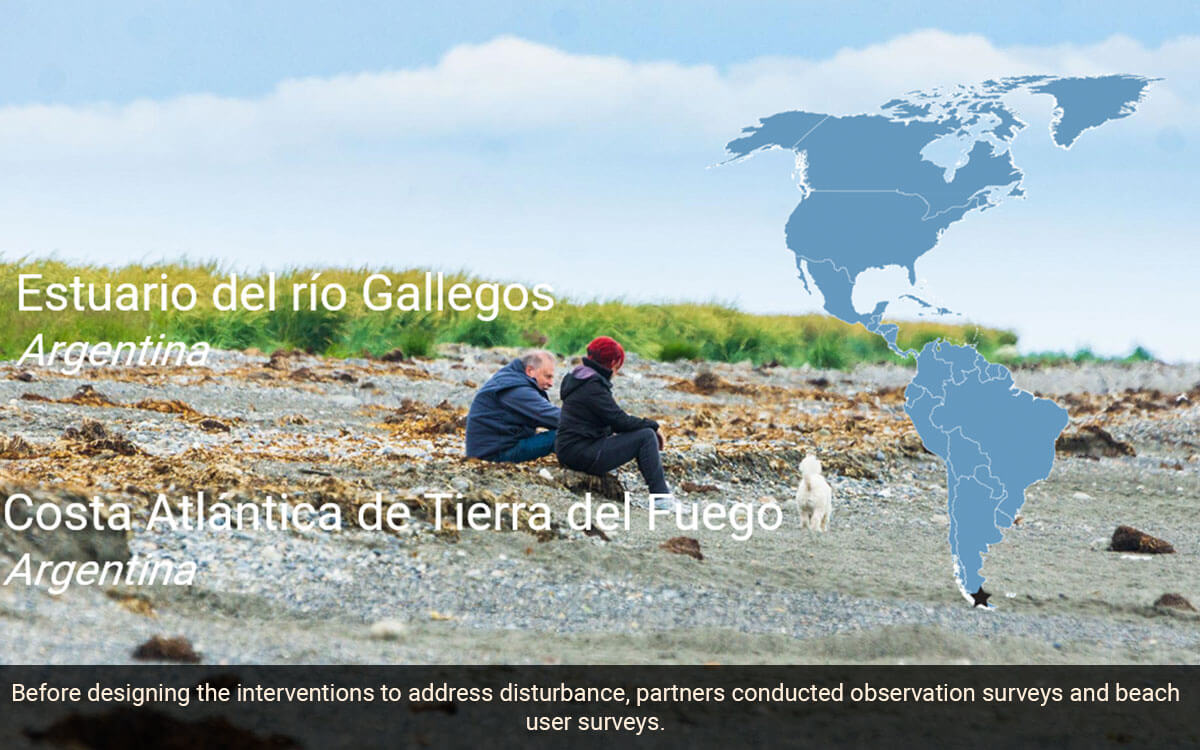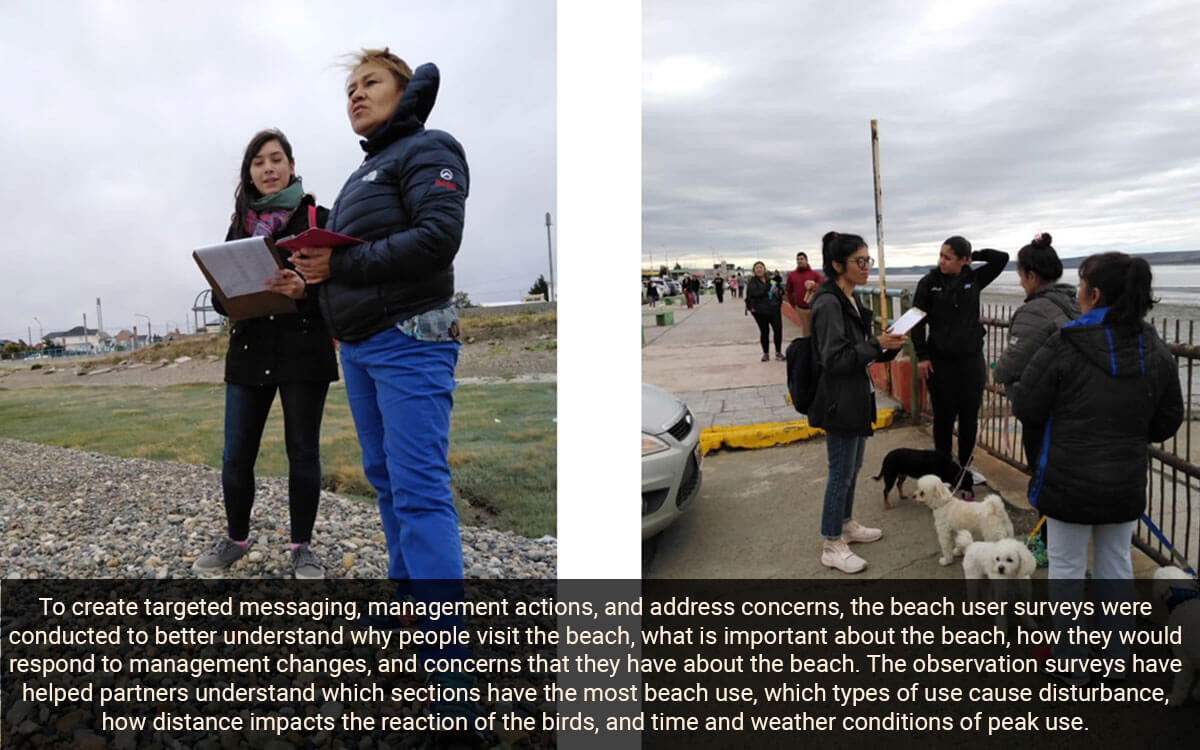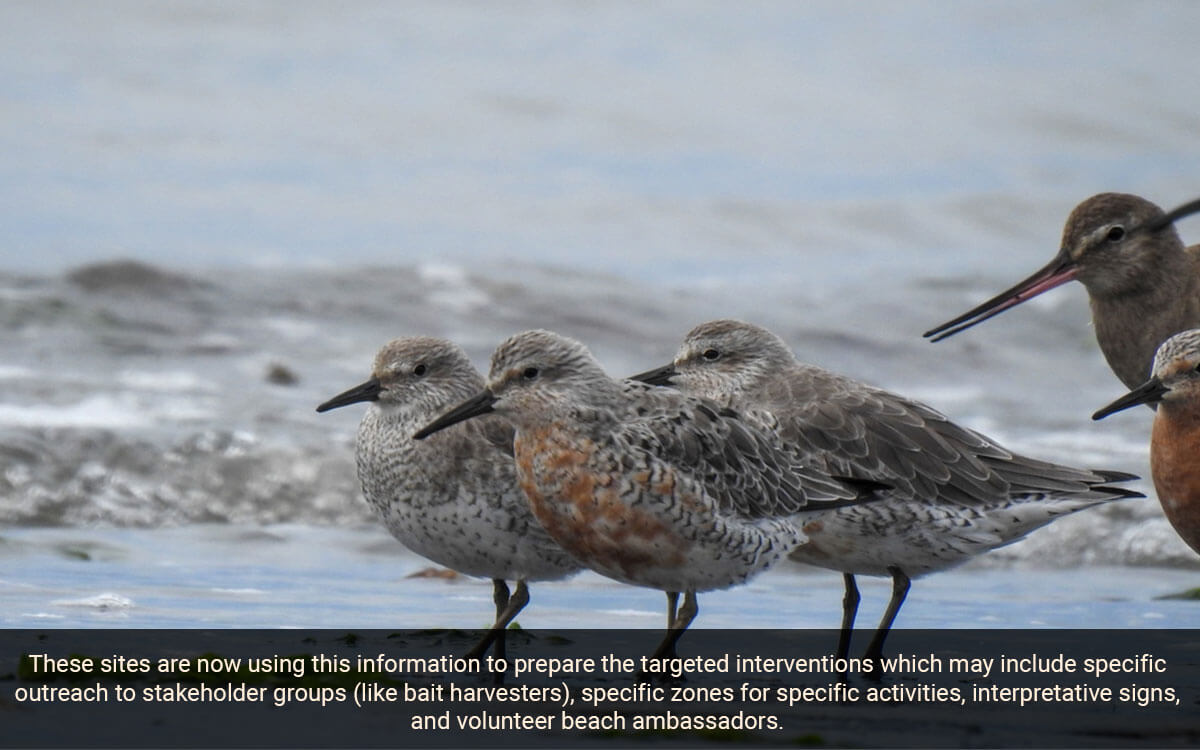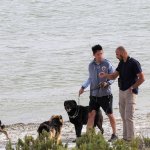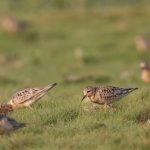By Laura Chamberlin & Abby Sterling
This post was first pubished on Manomet’s newsletter
A Red Knot, traveling on a journey from South America north up to the Arctic tundra to nest, has a narrow time frame when the tide is just right for the sand to be moist enough for its nutritious food resources to be accessible. After feeding frantically, the bird must find a quiet, safe bit of sand to roost on, resting while it digests and converts that food into fat that will fuel its migration. While it rests, the bird will preen, ensuring that its feathers are in top form to fly thousands of miles or to dodge hungry raptors that it might encounter.
But instead of finding that quiet, peaceful beach to do the work of being a Red Knot, these birds often find beaches crowded with people, dogs, kites, and boaters. These threats force that bird to fly over and over again, instead of feeding, resting or preening, wasting valuable energy each time it flies. With limited time to forage or rest they are likely to be unprepared for migration which can decrease survival chances and even impact the breeding season.
The threats posed by recreational disturbance can turn good shorebird habitat into a place that is unavailable for providing resting sites or food, adding to the ever-growing threat of habitat loss. The Atlantic Flyway Shorebird Initiative (AFSI) and Pacific Shorebird Conservation Initiative (PSCI) have both identified disturbance as a key threat. Through the Coalitions for Shorebirds project, six sites are working to implement the disturbance objectives of those flyway-scale initiatives. Reducing recreational disturbance is challenging because it requires the behavior change of beach users, all with varying opinions and perceptions on beach use and conservation. The strategy for change depends on the individual beach user. Key solutions include education, beach use zones, regulation, temporary fencing, and stakeholder collaboration. Employing all these techniques broadly as part of the Coalition for Shorebirds project allows us to share successes, learn from our partners, and hone our approaches to be more effective.
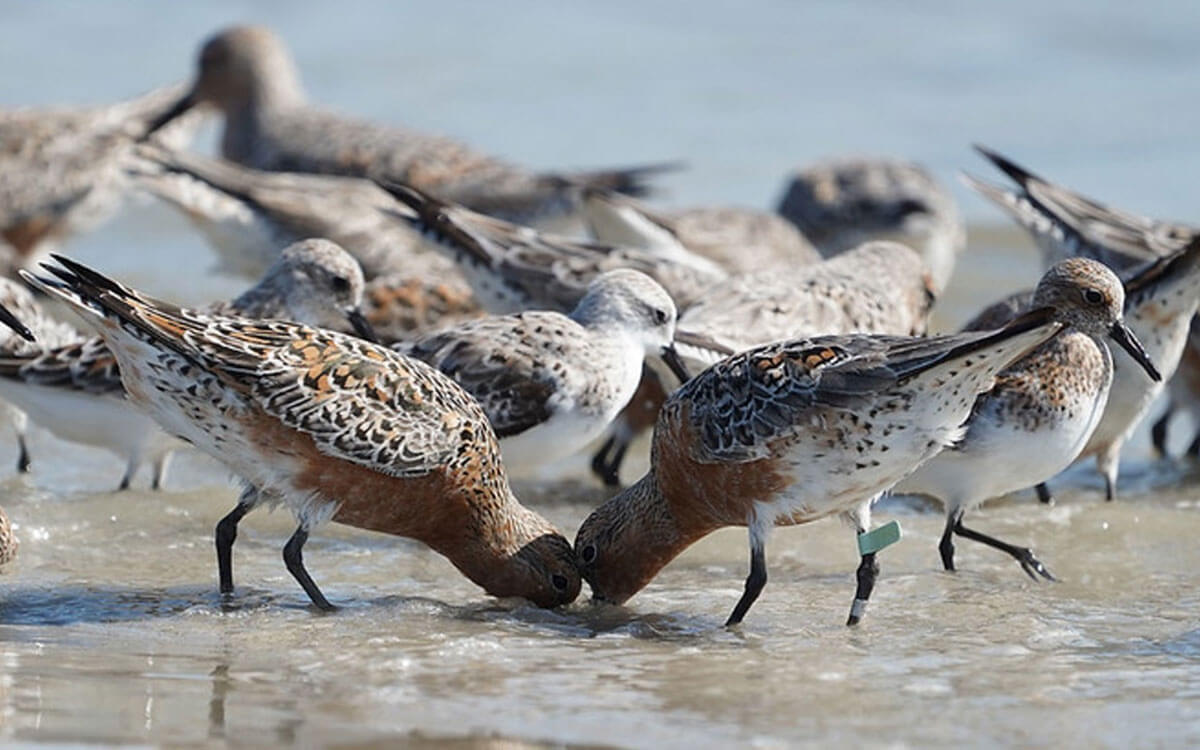
Another benefit of this work is that by highlighting the value of the habitat for wildlife, we can build local pride and support for beach conservation within partner communities, shifting the conversation towards protection of special places. Photo: Maina Handmaker
At all of these sites, off-leash dogs are a critical concern. Dogs are a particularly challenging type of disturbance because they resemble a shorebird’s predators, often behaving like a fox or coyote. Particularly in places and times when shorebirds are most vulnerable, like nesting or roosting, negative impacts can be greatly reduced by leashing dogs. However, dog owners often feel that it is important for their dog to be off leash for exercise or to enjoy themselves and don’t understand that chasing the shorebirds causes problems. The challenge for site partners is to find innovative opportunities to motivate dog owners to find other ways to achieve these benefits for their dogs.
To learn more about the work at these sites, please explore below.
GEORGIA BIGHT
Partners: Georgia Dept. of Natural Resources, South Carolina Dept. of Natural Resources, University of Georgia (UGA), National Audubon, Virginia Tech, UGA Marine Extension & UGA Sea Grant, Jekyll Island, National Park Service, United States Fish and Wildlife Service, Little St Simons Island, City of Tybee, One Hundred Miles, Little Cumberland Island
BAHÍA DE TODOS SANTOS
Partners: Terra Peninsular, Pacifica-at Ensenada Bay, Contacto Salvaje A.C., Club Canófilo de Baja California A.C., Ecologia Municipal – Ayuntamiento de Ensenada, Secretaría de Economía Sutentable y Turismo, Carmen Salazar – Regidora por el Ayuntamiento de Ensenada.
LAGOA DO PEIXE
Partners: SAVE Brasil, SEMA/RS, FEPAM, CECLIMAR and COA-POA
DESEMBOCADURA Y ESTUARIO DEL RÍO MAIPO
Partners: Fundación Cosmos, Municipalidad de Santo Domingo, Red de Observadores de Aves y Vida Silvestre de Chile and Yecos del Inco (Academia Científica Escolar)
ESTUARIO DEL RÍO GALLEGOS
Partners: Asociación Ambiente Sur, Universidad Nacional de la Patagonia, Unidad Académica Río Gallegos, Consejo Agrario Provincial
COSTA ATLÁNTICA DE TIERRA DEL FUEGO
Partners: Asociación Ambiente Sur, Secretaria de Ambiente, Desarrollo Sostenible y Cambio Climático de TdF AIAS Municipio de la Ciudad de Río Grande – Mesa Técnica Asesora RCATdF




